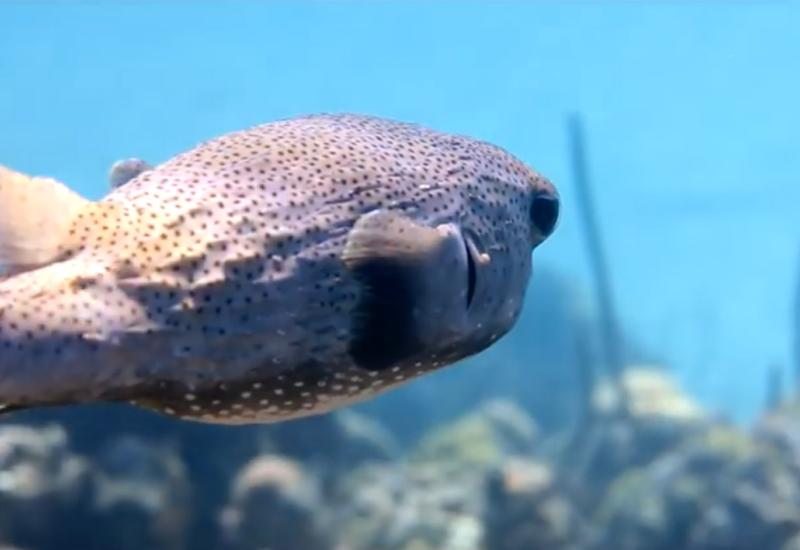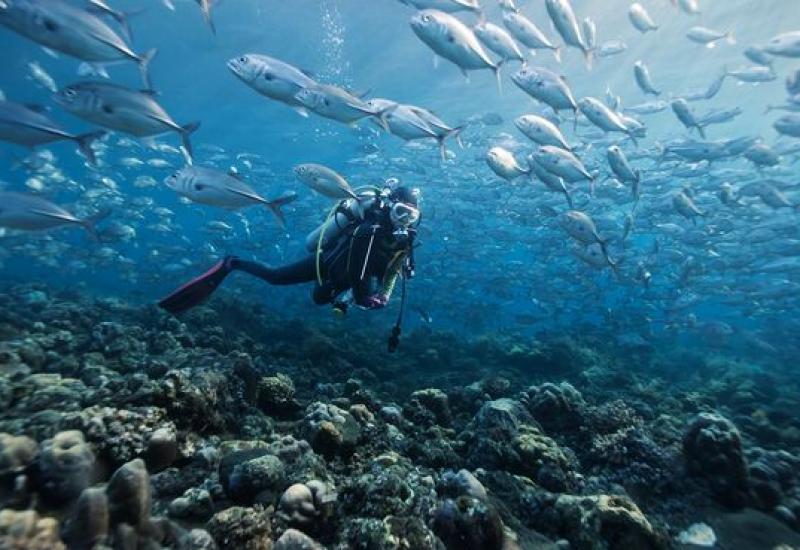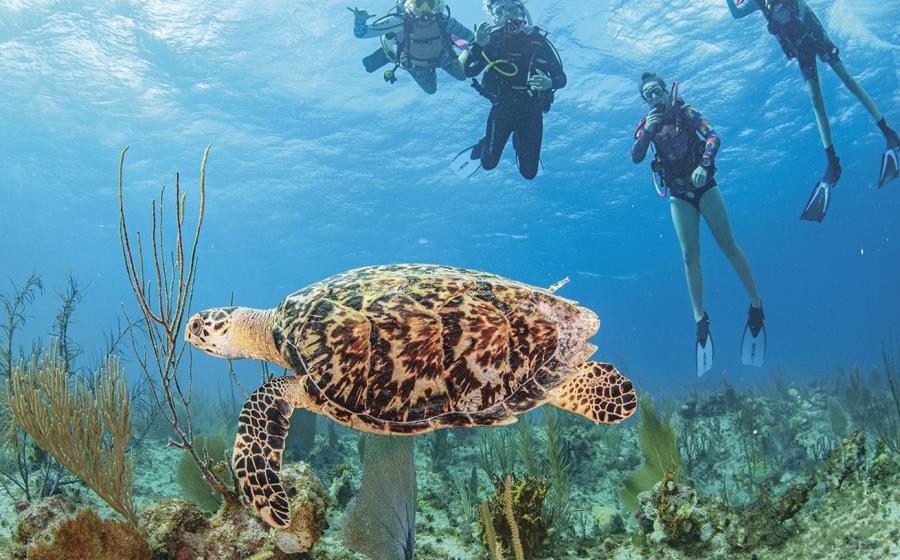Underwater Photography Tips for Caves and Cenotes
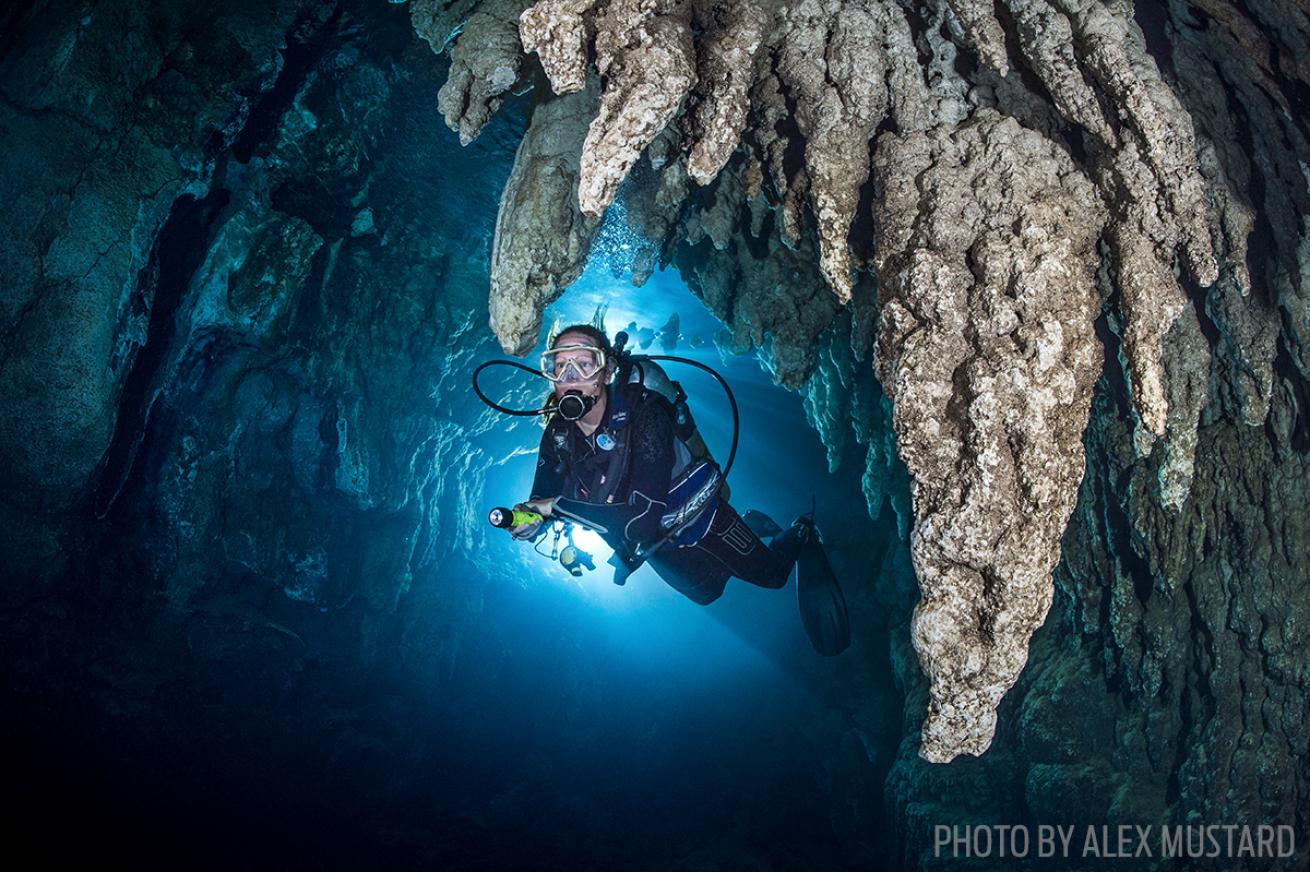
Alex MustardA diver exploring Chandelier Cave in Palau stands out thanks to a strobe placed on a ledge in the back.
Whether in fresh or salt water, caverns have long been a favorite niche in underwater photography. They offer a unique mix of subject matter: captivating rock formations, atmospheric lighting and spearing shafts of sunlight. Their popularity has risen further in recent years, as each generation of digital cameras has rewritten the rules of shooting in the dark. Higher ISOs are now a valuable tool to create images that weren’t possible before.
PRO TIP: POSITION MODELS AGAINST A BRIGHT BACKGROUND SO THEY DON’T GET LOST IN DARKNESS.
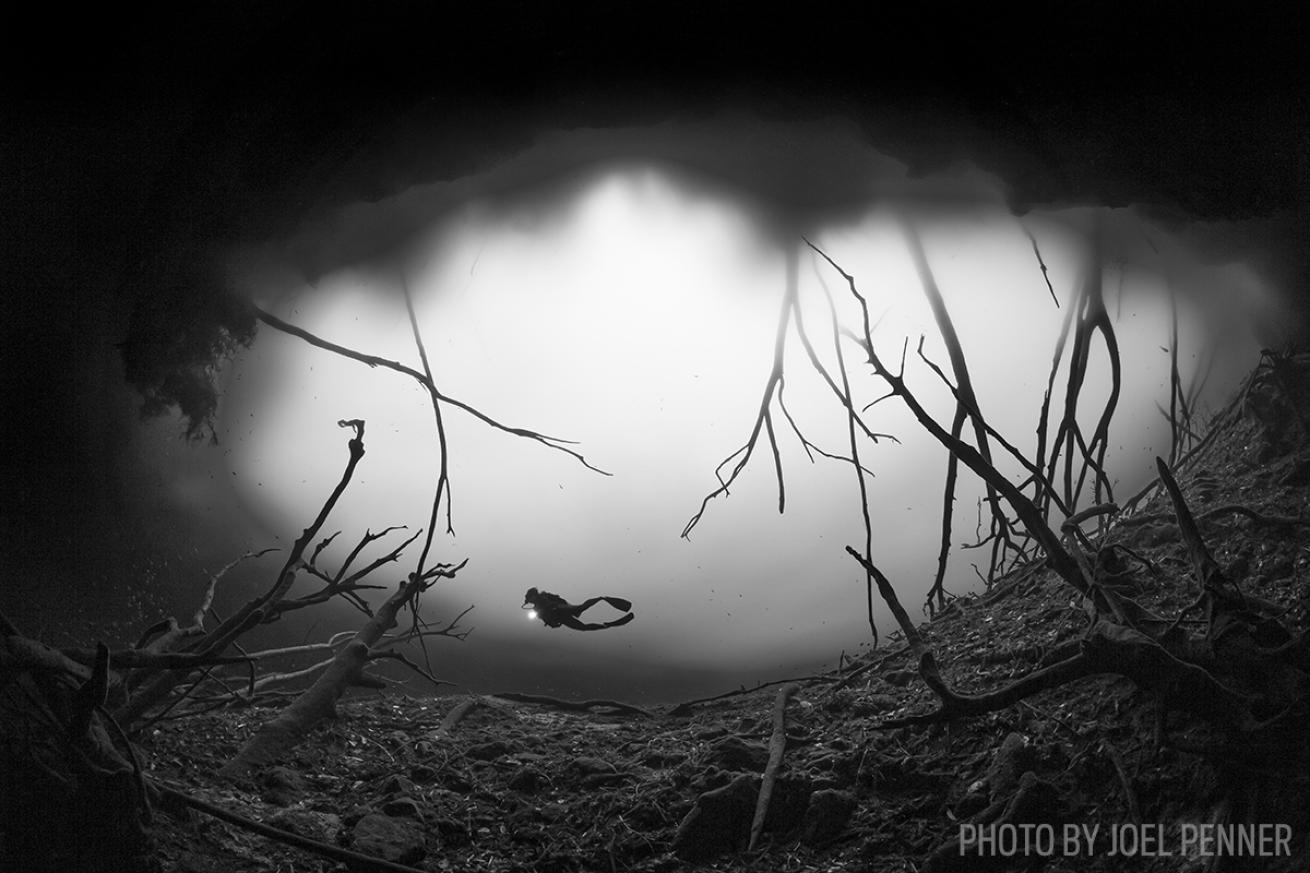
Joel PennerA diver fins through the Carwash cenote in Quintana Roo, Mexico.
Practice the Dark Arts
1. Dealing with Darkness
Caverns are dark places, and this creates a major problem: Photography, by definition, needs light. Generally, in caves, the more strobe you use, the less atmosphere you capture. As Joel Penner, who took this image, advises, “You will want to keep your strobes in the off position for the most dramatic lighting.” Darkness also means you will be using very different values of aperture, shutter speed and ISO than normal. It is best to sacrifice a bit of all of them rather than a lot of any one. Instead of making rushed decisions in the water, think carefully about your settings before you dive.
2. Stay Focused
The next challenge darkness presents is focusing, which is much harder for the camera in gloomy light. Focus is also more critical than usual because you will likely be using a more open aperture, so will have less depth of field. “A good camera can attain critical focus even when it is dark,” says Penner. “Be sure to focus on the closest foreground elements, and the rest of the image will have good sharpness throughout.” The alternative is to set the focus once, before going into the darkest part of the cave, and keeping it locked for the remainder of the dive.
3. The Issue of Exposure
The final challenge is exposure. For the best compositions, swim to the darkest part of the cave, turn around, and shoot back toward the light. “Reframe your composition for an even exposure by eliminating a very bright part of the scene from the field of view,” says Penner. The darkness also makes exposure hard to judge because your LCD screen will look brighter than normal. This causes you to underexpose the photo, which is a problem because you will already be at a high ISO and therefore have more image noise than usual. Correcting the underexposure in post-processing only amplifies this noise.
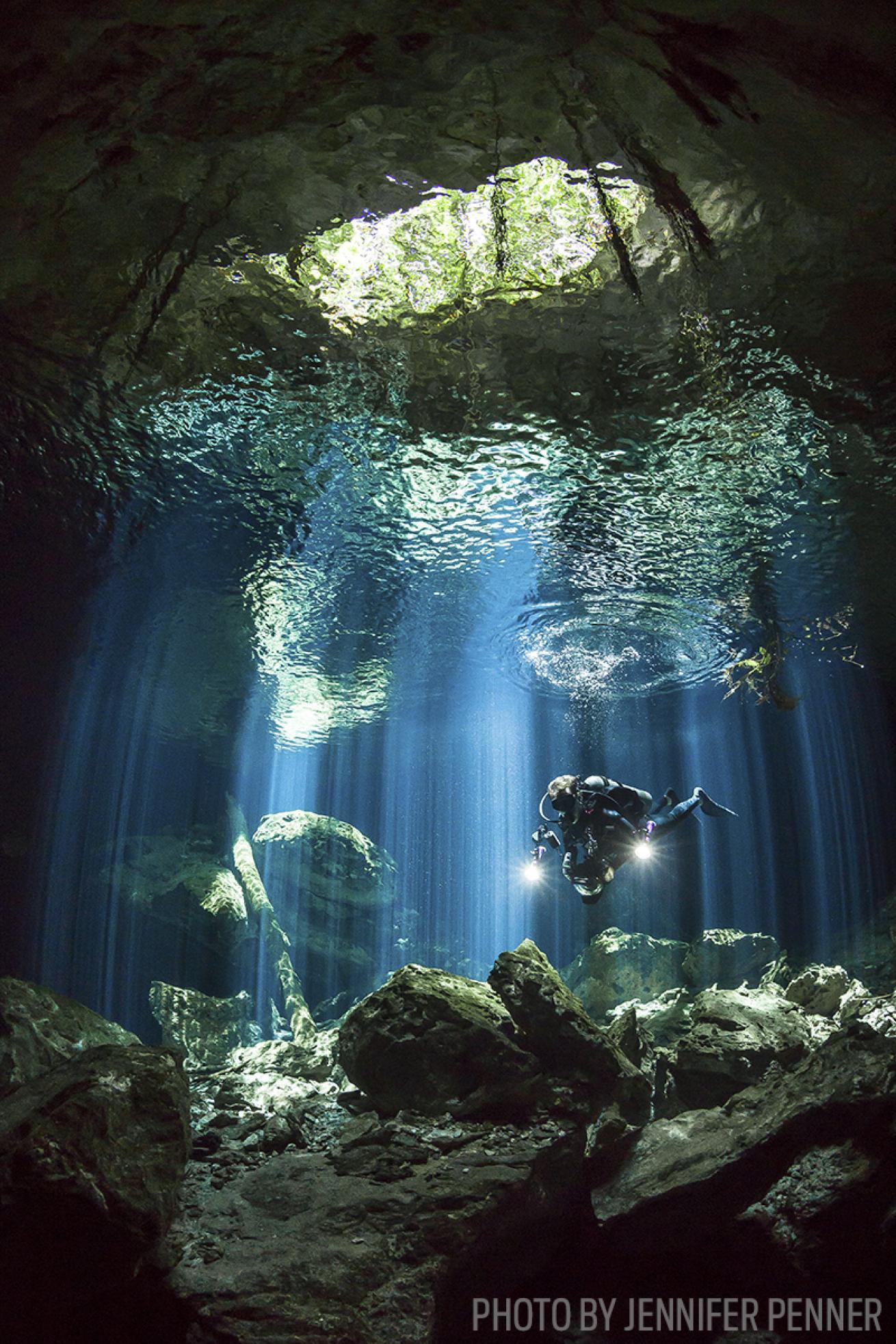
Jennifer PennerCapturing shafts of sunlight in a cenote adds beauty and drama to your photos.
Brilliant Beams
When it comes to photographing the light that filters down into a cavern or cenote, all you need are a few tricks of the trade — to start, compose the scene
Beginner Tip
Beams of sunlight look best when they start and finish in the frame. Compose them so they run vertically up and down the image, or on a diagonal by tilting the camera. Fisheye lenses can create bendy beams, which aren’t necessarily a problem. The fix is to compose them down the centerline of the frame to keep them straight.
Intermediate Tip
Shafts of sunlight dance backward and forward with the surface of the water, making it tricky to catch them at the perfect moment. Theoretically, using a fast shutter speed is the best way to freeze their motion in finely defined rays. However, in a dark cave, this is not always possible. Don’t worry: Beams still look good at slower shutter speeds.
Advanced Tip
Beams are always less bright than their light source. For the most dramatic photos of shafts of light, hide their light source when composing so the beams are the brightest object in the scene. This will allow you to expose for the beams, showing them strongly without inadvertently capturing distracting overexposed elements elsewhere in the frame.
Dr. Alex Mustard is a marine biologist who has been a full-time underwater photographer since 2004. His latest book, Underwater Photography Masterclass, is out now. To see more of his work, visit amustard.com.
Want more photography tips? Check out How To Get Started | Tips for Macro Photography | and The Best Places for UW Photography.



